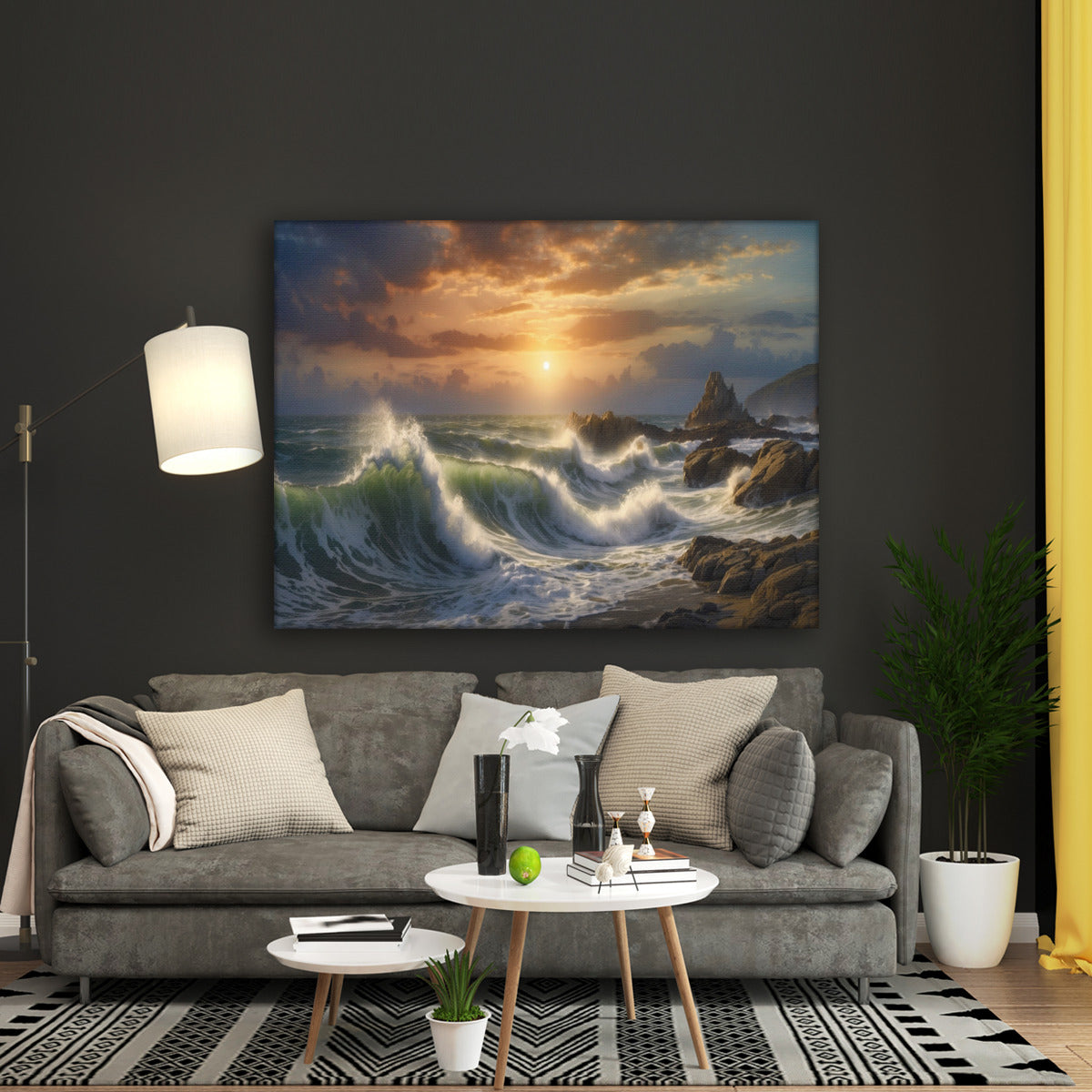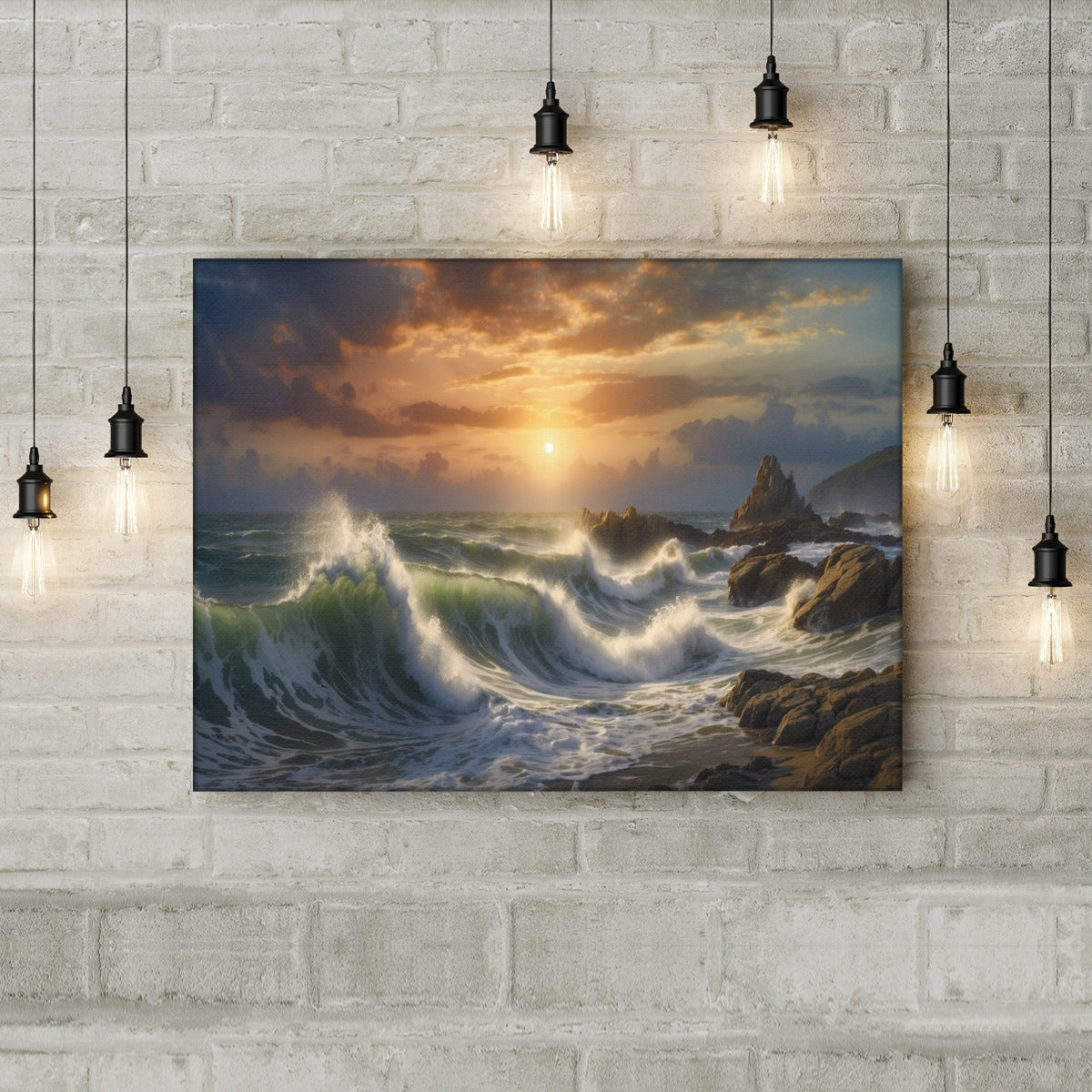Seascape Art Paintings: A Deep Dive into the Beauty of Coastal Masterpieces
Seascape Art Paintings: A Deep Dive into the Beauty of Coastal Masterpieces
Couldn't load pickup availability
Share
Seascape art paintings capture the awe-inspiring beauty and vastness of the ocean. Whether showcasing the tumultuous waves of a stormy sea or the serene calm of a beach at sunset, seascape paintings have captivated artists and art lovers for centuries. The blend of water, light, and the natural landscape creates a mesmerizing subject that continues to inspire painters from all over the world. In this comprehensive guide, we explore the history, techniques, artists, and trends that make seascape art paintings a timeless and beloved genre.
What Are Seascape Art Paintings?
Seascape art paintings are works of art that primarily focus on the sea or ocean as the central subject. This genre often includes elements like beaches, cliffs, boats, harbors, and coastal wildlife. Some paintings highlight the power and motion of the sea, while others depict tranquil, sun-soaked shores.
Seascape art can vary greatly in style, from realistic interpretations of the sea to more abstract or impressionistic representations. Regardless of style, these paintings evoke emotions tied to the ocean’s natural beauty, providing a sense of peace, adventure, or awe.
The History of Seascape Art
Seascapes have been a central theme in art for thousands of years. Some of the earliest depictions of the sea can be found in ancient Greek and Roman mosaics, pottery, and frescoes. However, seascape art as we know it began to flourish during the Renaissance when artists sought to capture the natural world in a more realistic manner.
By the 17th century, seascape painting had become a significant genre in European art, particularly in the Netherlands. Dutch painters such as Willem van de Velde the Elder and Ludolf Bakhuizen specialized in maritime scenes, showcasing the importance of the sea in Dutch culture. The genre continued to develop over the centuries, with J.M.W. Turner and Claude Monet pushing the boundaries of seascape painting during the Romantic and Impressionist movements, respectively.
Today, seascape paintings are still a popular subject, with both contemporary and traditional artists exploring the emotional and aesthetic qualities of the sea.
The Significance of Seascape Art Paintings
Seascape art resonates with people on many levels. For some, it’s the beauty of the ocean that draws them to this genre, while for others, it’s the sense of freedom and endless possibility that the sea represents. Here are a few reasons why seascape paintings hold such significance:
1. Connection to Nature
Seascape art allows viewers to experience the power and tranquility of the ocean without leaving their homes. For many, these paintings serve as a reminder of nature’s beauty and our connection to the environment. The vastness of the sea often symbolizes freedom, peace, and reflection, offering a sense of escape from everyday life.
2. Evoking Emotion
The ocean is inherently emotional. It can represent calm, peace, and relaxation, but it can also symbolize strength, fear, and power. Seascape paintings often evoke strong emotional responses, depending on the scene depicted. For example, a calm beach at sunset might inspire feelings of peace and serenity, while a stormy sea could evoke tension or excitement.
3. Timeless Appeal
Unlike other art genres that may go in and out of fashion, seascape paintings have a timeless appeal. The sea has been a central theme in art for centuries, and its allure shows no signs of fading. Whether you prefer traditional or modern interpretations of the sea, there is always something captivating about the ocean’s ever-changing nature.
Order one of our beautiful seascape paintings today.



